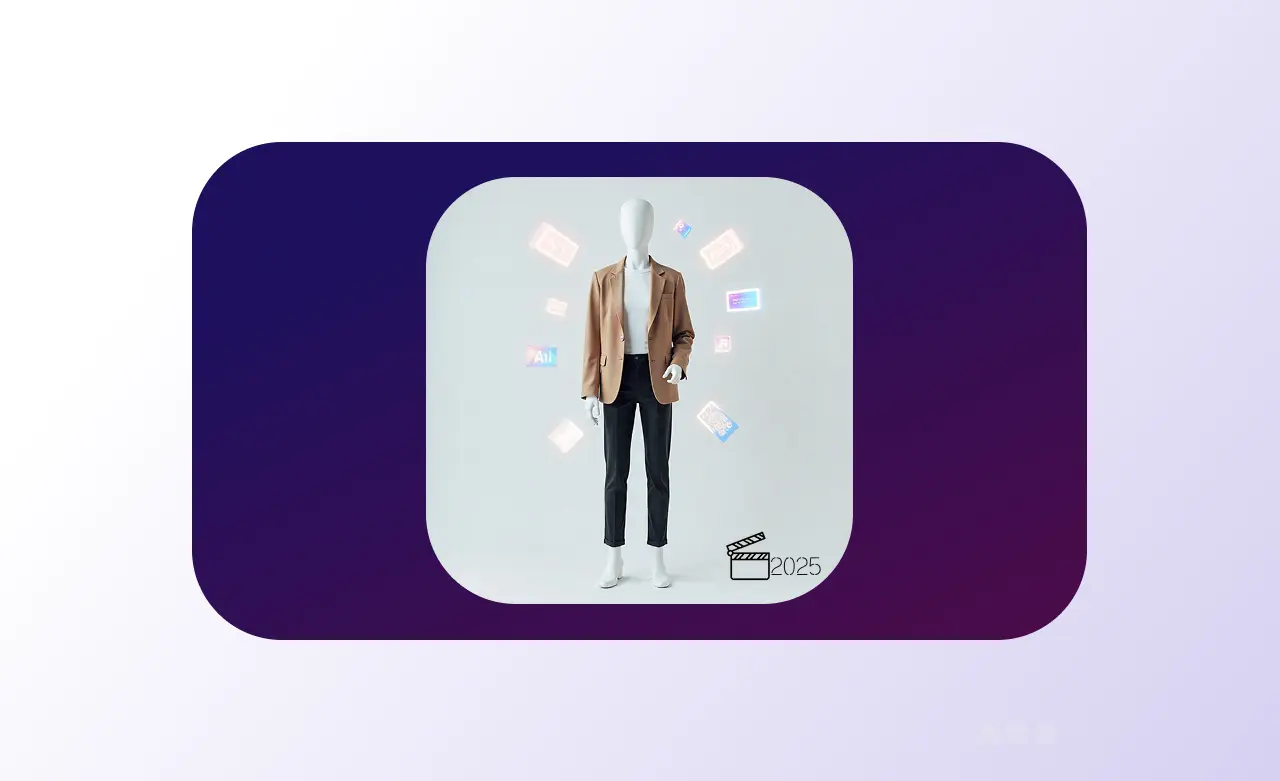A Story of Revolutionising Fashion: The Journey of Anne-Christine Polet's Digital Transformation

Pixyle AI recently had the privilege of sitting down with Anne-Christine Polet, the visionary behind the digital transformation of Tommy Hilfiger and the founder of Stitch.
In this first Voices of the Industry interview, Polet shares her insights into overcoming challenges, the role of technology in sustainability, and the exciting acquisition by Fashion Cloud.
Pioneering Digital Transformation at Tommy Hilfiger
Can you share the pivotal moments and challenges you faced while overseeing the transition of Tommy Hilfiger to digital-only sell-in, and how it led to the formation of Stitch?
Anne-Christine Polet: As an industry, fashion has long relied on physical processes, from prototypes to samples, creating wasteful, time-consuming practices. The amount of physical product that gets created that never even reaches a consumer is mind-boggling. You would think that it’s a no-brainer to try and change this, but in reality, the entire fashion ecosystem is set up to facilitate this traditional way of working.
So, the challenge was to shift this entrenched industry norm. Initiatives like 3D design and Digital Showrooms aimed to transform the entire value chain. In 2014, our focus was on digitising the sell-in experience, replacing physical samples in showrooms with a digital showcase.
Technological challenges were present, but the real hurdle was guiding people through this transformative change. Shifting to digital selling wasn't just about adopting new technology—it involved completely reimagining a segment of the fashion value chain. In essence, we were replacing an established component with something entirely new. That means you really need to consider the wider impact and leverage systems thinking to ensure that you’ve covered all bases.
The Digital Showroom became a big success and rolled out to all markets between 2016 and 2019. It reduced sample dependency, and enhanced sell-in efficiency, and it got us thinking: what if we could help other brands achieve similar results? It would be a big step for the industry as a whole. And that was the start of our startup journey.
Fast-Tracking Innovation with Stitch
As the head of Stitch, how do 3D design and Digital Showroom capabilities contribute to fast-tracking innovation in the fashion industry?
Anne-Christine Polet: Digitising the value chain opens doors to immediate opportunities for sustainable practices. 3D design replaces prototypes in the design phase, and the Showroom eliminates physical samples for B2B sales. Beyond these benefits, digitisation enables operating outside the traditional chain, allowing brands to seamlessly transition from 3D design to sell-in, and effectively manage ecommerce product tags.
The 3D assets can also be leveraged for compelling marketing materials and serve as the foundation for efficient on-demand production, highlighting the advantages of catalogue marketing. You could really start to redesign your processes from the ground up and I think that is such an incredible opportunity for an industry that drastically needs to reconsider its current practices.
Fashion Cloud's Acquisition of Stitch Showroom
The news of Fashion Cloud acquiring the Stitch Showroom is generating excitement. What would you say about the key benefits it brings to fashion brands and why it is a great match with Fashion Cloud?
Anne-Christine Polet: The Showroom significantly impacts a brand's sell-in practices, improving not just sampling but also marketing and merchandising. However, it's crucial to understand that a Digital Showroom is not a plug-and-play solution; it transforms from sample-based to digital selling, influencing physical showroom layouts and requiring collaboration across various brand teams, including sales.
At Stitch, we noticed that although many brands were interested in adopting a Digital Showroom, they often faced challenges in readiness. Reasons ranged from lack of an order management system to incorrect data setup. Seeking ideal partners to facilitate the transition, we found Fashion Cloud, whose extensive software offerings seamlessly integrated with our goals.
They offer a wide range of excellent software solutions designed to help brands digitise their wholesale processes. The addition of the Showroom seamlessly fits into their existing portfolio of offerings. With Fashion Cloud already having more than 700 brands on its platform, it positions them as an outstanding catalyst for fostering extensive digitization throughout the industry.
Recognition as a Top 100 Innovator by Vogue Business
Being recognized as one of the Top 100 Innovators curated by Vogue Business is a significant achievement. How has this acknowledgement impacted your approach to driving innovation in the industry?
Anne-Christine Polet: Being nominated as a Top 100 Innovator was a big recognition for the work Stitch has done all these years, helping fashion brands digitise their value chain. Change in this industry is slow and can be difficult at times. So, acknowledging the innovators that are working tirelessly to help accelerate the change is hugely rewarding and needed. We need all the help we can get to ignite systemic change and startups are a big part of this.
Technology, 3D Design, and Sustainability
Can you elaborate on the role of technology, particularly 3D design, in addressing sustainability challenges in the fashion industry, considering your focus on reducing waste and streamlining operations?
Anne-Christine Polet: If you look at design-heavy industries, from automotive to homeware, most of that design work is all done digitally. And 3D doesn’t just get used for designing. It’s leveraged for marketing, sales, production, you name it! Take the IKEA catalogue for example: photography has almost entirely been replaced by 3D renders.
Surprisingly, none of this has hit fashion yet. And the impact could be so big. Beyond replacing physical prototypes, 3D design has the power to reshape how brands collaborate with manufacturers, how internal teams work together, the speed of collections to market, production methods, and marketing strategies. Embracing 3D design could indeed be the game-changer the fashion industry needs.
Overcoming Resistance to Digital Practices
With your experience in leading the digital transformation, what advice do you have for fashion professionals looking to embrace digital practices but facing resistance or scepticism within their organisations?
Anne-Christine Polet: Transformation wouldn’t exist without resistance. And shifting from one paradigm to another is uncomfortable. I’ve always believed that when you’re leading large digital transformations, it’s best to spend as much time on the technology as you do on the people. So Spend 50% on valuable technology that solves real business problems (never for the sake of tech), and the remaining 50% on communication, training, cultivating ambassadors, change management, and continuous communication.
And because of this people-focus, it’s so important to have a team in place with the right mindset. Qualities like curiosity, growth mindset, problem solving and reliance is what I would look for in team members to help drive positive change in an organisation.
A Thank You Note by Pixyle AI
In wrapping up this insightful interview with Anne-Christine Polet, we must express how happy we are that Anne-Christine has been our first prominent voice featured on the Pixyle AI series “Voices of the Industry''. Her career showcases a profound commitment to reshaping the fashion industry through technology, emphasising sustainability and efficiency. Her experiences, from transforming Tommy Hilfiger to co-founding Stitch, offer a valuable perspective on innovation in the digital era.
Many thanks to you, Anne-Christine Polet for sharing your vision and inspiring positive change in the fashion landscape.

Discover how Pixyle.ai's automatic tagging can elevate your product data management and enhance the overall shopping experience.
Book a free consultation call with one of our product specialists, right now ↓
Discover Pixyle Ultimate Dress type Taxonomy Guide
Learn how to structure your catalog in a way that matches how people actually shop.


Boost your sales with AI product tagging
Optimize your eCommerce catalog to improve discovery and conversions.







